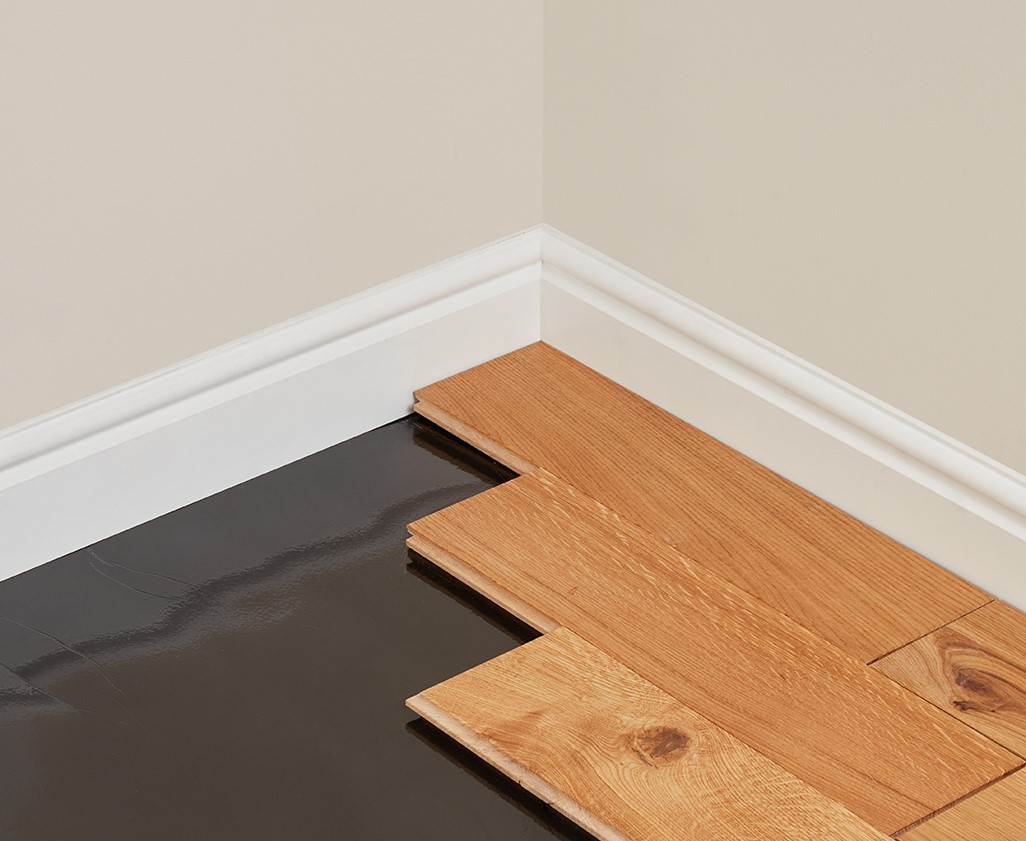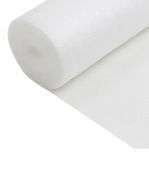
When planning the installation of laminate flooring, your choices regarding underlay are important for two reasons. Firstly, the longevity of your laminate flooring can be greatly impacted by underlay. Installing laminate flooring products without underlay, or with an underlay that is not best suited to the situation can result in damage, increased household bills, increased noise, and possibly even issues with dampness. Secondly, for many laminate flooring products, underlay can be an additional purchase, so it is essential to factor this into your budget.
What is underlay and why do we need it?
Underlay is an important material that is layered on top of your sub-floor before the installation of flooring. It is a vital addition to any space, regardless of whether the flooring will ultimately be laminate or carpet, and it serves several purposes.
- Minimisation of imperfections in the sub-floor – Whether the sub-floor is concrete, solid wood or plywood, it will have imperfections. A layer of underlay creates a barrier between these imperfections and the laminate flooring, helping to reduce flexing in the laminate planks.
- Insulation – Underlay helps to increase insulation in the space. Modern underlay materials have an R-value, which refers to the heat conductivity of the product. Higher R-values indicate lower heat conductivity and therefore higher levels of thermal insulation. This can help to keep household bills under control.
- Noise reduction – Some underlay products can contribute to the soundproofing of a space by helping to muffle noise created by footfall and movement on laminate floors.
- Moisture protection – Many modern underlay products act as a ‘vapour barrier,’ or a layer of material that helps protect against moisture travelling up from the sub-floor.
The importance of the sub-floor
The type of sub-floor in the space in question is a significant factor in choosing the best underlay for laminate flooring. In all laminate floor installations, the area must first be stripped down to the sub-floor to allow for optimal fitting. Though the use of underlay is essential, carpet cannot be substituted for an underlay product because it does not provide the level of rigidity necessary to protect the laminate boards from damage. Having stripped the area back, the type and condition of the sub-floor can be used to inform underlay selection.
Concrete sub-floors are both porous and liable to physical imperfections impacting surface levelling. This means that, first and foremost, underlay is required to ensure a smooth installation surface. It also means that a vapour barrier is essential. Where moisture or dampness is allowed to seep up through concrete sub-floors and into the uppermost flooring, adhesives within the planks can be affected. This can cause visible lifting or bubbling of the design layer, and a reduction in the efficacy of the wear layer over time. Moreover, mould and mildew can develop and accumulate underneath and within the flooring.
Wood sub-floors can contract and expand with temperature variation, and underlay helps to stabilise the surface for laminate flooring installation. As organic material, wood sub-floors also require adequate airflow to prevent the development of problematic mould and mildew. In this case, moisture protection becomes more complex because it is just as important to protect the sub-floor from damage caused by water and dampness as it is to protect the laminate flooring product itself.
Choosing underlay for your laminate flooring
There are multiple underlay options suitable for laminate flooring. This flexibility of choice stems from the fact that most laminate products create what is essentially a ‘floating floor,’ so there is less need of fixtures such as nails or staples. The broad selection of underlay options means that choices should be made on the basis of both the sub-floor type and the type of space in which the laminate will be installed. In other words, the questions to ask when choosing underlay for laminate flooring are, “Which room is this for, and what type of sub-floor does it have?” Once you have answered those questions, you are able to make your selection from the various types available.
- Standard foam
A standard foam underlay for laminate flooring installations is a thin layer of material that provides cushioning, or padding, between the sub-floor and the laminate planks. This type of underlay provides no moisture protection, however, so would only be suitable for wood sub-floors in rooms with minimal risk of spillage or accumulation of damp, unless an additional vapour barrier is used.
- Vapour barrier
A vapour barrier underlay provides the necessary moisture protection needed for laminate flooring installations. This type of underlay is also often suitable for use with under-floor heating systems when paired with a layer of paper felt underlay.
- Combination
Combination underlay products provide a thicker layer of cushioning along with moisture protection. This makes for a versatile underlay that is suitable for most interior spaces, and for most laminate flooring installations.
- Cork
A cork underlay provides a high level of noise reduction and helps to level out significant imperfections in the sub-floor, including unevenness between areas. As a naturally occurring material, it helps facilitate airflow to the sub-floor and further combats mould and mildew with organic antimicrobial qualities.
Choosing underlay: The FAQs
Q. What thickness of underlay do I need?
A. The overall thickness of underlay products for laminate flooring should be between 3mm and 5mm. This may include a thinner, separate vapour barrier, or it may be in a single layer.
Q. How do I choose underlay for use with underfloor heating?
A. When choosing underlay for laminate flooring that will be used with underfloor heating, you need to consider the basic questions of sub-floor type and room usage while also considering the tog rating of the material, too. Some underlay products have a high tog rating and therefore provide excellent thermal insulation. Laminate flooring planks themselves also add to the insulation created within the floor. With underfloor heating, a high level of insulation prevents heat from rising into the room, thereby reducing efficiency, and causing household bills to increase. It is important, therefore, to ensure that the underlay intended for use with underfloor heating has a low tog rating to facilitate efficient heat transfer through the flooring.
Q. Can I use carpet underlay with laminate flooring?
A. The flexible nature of carpet requires thick, spongy underlay and this is not suitable for laminate flooring installations. Laying laminate flooring over carpet underlay will reduce the rigidity of the floor and cause high levels of stress on the joints between the planks. This will lead to warping, damage, and a reduction in the longevity of the flooring.
Q. Can I re-use old underlay?
A. Underlay works hard beneath your floor so, unless it was recently installed itself, it is important to replace underlay before installing a new laminate floor. Installing new underlay at the same time as the laminate ensures that the floor and sub-floor are properly protected from damage, wear and tear.
For further guidance on underlay, call Flooring Superstore today, on 03308 182 500.














